(L to R) Tom Hanks and Robin Wright star in ‘Here’. Photo: Sony Pictures.
Opening in theaters November 1st is ‘Here,’ directed by Robert Zemeckis and starring Tom Hanks, Robin Wright, Paul Bettany, Kelly Reilly, Michelle Dockery, Gwilym Lee, Ophelia Lovibond, and David Fynn.
Related Article: Tom Hanks Features in First Pictures of Robert Zemeckis’ ‘Here’
Initial Thoughts
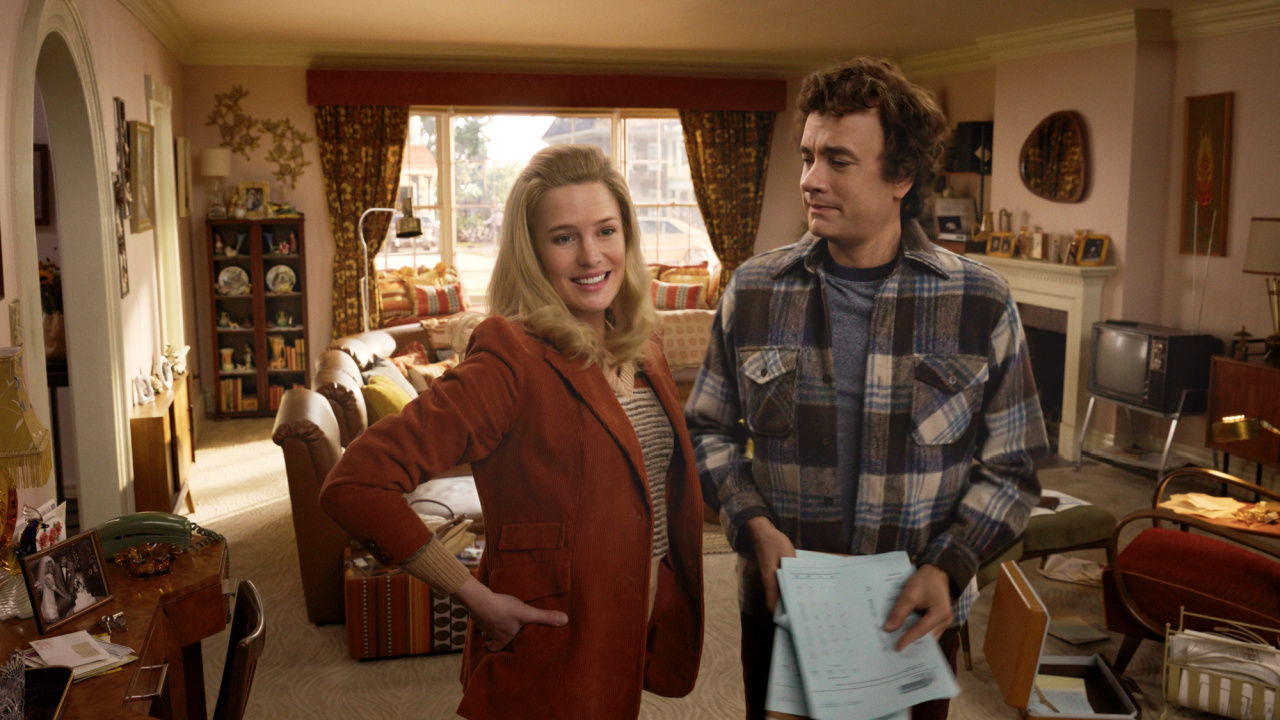
(L to R) Robin Wright and Tom Hanks star in ‘Here’. Photo: Sony Pictures.
Robert Zemeckis has made some genuinely great films, including the ‘Back to the Future’ trilogy, ‘Contact,’ and ‘Who Framed Roger Rabbit,’ and the mark of much of his career has been his endless fascination with pushing the boundaries of filmmaking and visual effects forward with new technologies and techniques. But for much of the past two decades, he has focused on the latter seemingly at the expense of the former, turning out a variety of films that may offer up new and sometimes dazzling effects while skimping on good stories and well-developed characters.
Such is the case with ‘Here,’ Zemeckis’ formally experimental new film in which he positions his camera, so to speak, slightly above and to the right of a single piece of land in Pennsylvania. The film then documents events that have happened on that spot, from millions of years ago when it was a dinosaur-inhabited swamp wiped out by an asteroid, to the romance between two First Nations lovers, to the series of families who inhabit a modest house over the course of the last century. Most of the focus, however, centers on one family and their rather banal history, with Zemeckis’ distant camera and constant changing of the scene failing to allow even the most perfunctory connection to these characters. The result is a shallow, trite film that also doesn’t do its lead actors any favors with the distracting digital de-aging foisted upon them.
Story and Direction
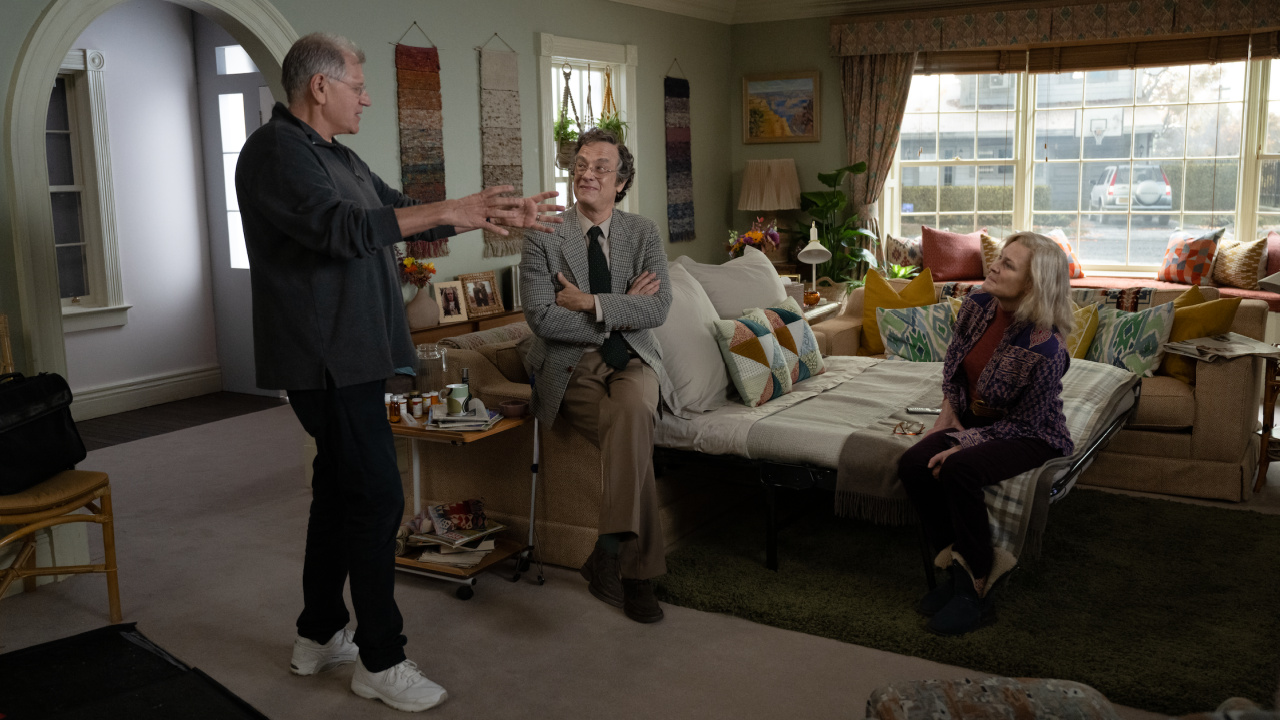
(L to R) Robert Zemeckis, Tom Hanks and Robin Wright on the set of ‘Here’. © 2023 CTMG, Inc. All Rights Reserved.
‘Here’ is based on a 2014 graphic novel by Richard McGuire, which he expanded from a six-page comic strip he first wrote and drew in 1989. In both the strip and the graphic novel, McGuire drew panels within panels, showing the space in different periods of time and connecting events from one panel to another whether they took place in the past, the present, or the future. Working from a screenplay he co-wrote with Eric Roth, Zemeckis attempts the same thing on film: as one scene plays out, a panel opens in a section of the screen and either expands or dissolves into the next scene, with the eras in time overlapping.
The problem is that Zemeckis and Roth do very little to make connections between the different eras, and with the exception of the period during which the house (which is built in 1907) is owned by the Young family, not enough time is spent in any of the eras to give us meaningful insight into how these different periods correspond or how life plays out in similar ways even in varied circumstances. After a while the continually opening frames just become annoying because they signify little.
That the most time is spent with the Young family is the second major problem with ‘Here.’ After a brief prologue in which the aged Richard (Hanks) and Margaret (Wright) enter the now-empty house, we flash back to when Richard’s dad Al (Bettany) and his new wife Rose (Reilly) first purchased it after World War II for the princely sum of $3,400. Beset by PTSD, Al drinks too much but nevertheless dutifully goes off to work for an insurance company, while Rose stays home and tends to their kids. They squabble, the frugal (almost penny-pinching) Al loses his job, they need to take out a second mortgage at one point, and their three kids grow up, including Richard, who is actually quite talented as an artist and harbors dreams of becoming one professionally. “Get a job where you wear a suit,” Al barks at him, giving us a preview of what’s ahead.
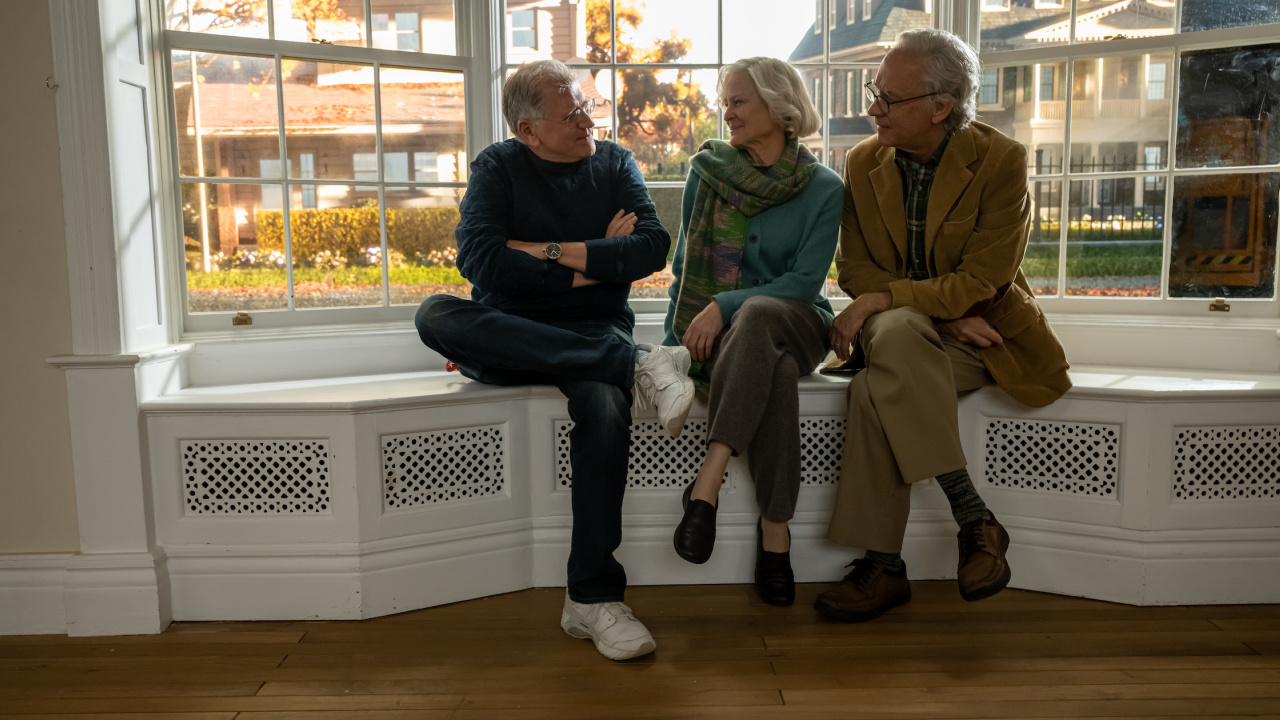
(L to R) Robert Zemeckis, Tom Hanks and Robin Wright on the set of ‘Here’. © 2023 CTMG, Inc. All Rights Reserved.
Sure enough, Richard gets his sweetheart Margaret pregnant at 18, and he’s forced to abandon his dreams and go into the insurance business as well. We find out later on that Margaret also gave up on a whole slew of ambitions, including owning their own house: Richard is even more thrifty than his dad, always coming up with reasons to keep their family under his parents’ roof instead of making a home of their own. And that’s how it goes for the Youngs, whose repressed dreams, secret yearnings, family get-togethers and fights, and ultimate destinies offer nothing we haven’t seen before in numerous family dramas, and doesn’t even absorb us in any way because our view hangs in one place above the living room like a security camera we might as well be checking on our phone.
The rest of the stories – minus the earliest dinosaur days and subsequent ice age – get even shorter shrift. The best is that of Leo (David Fynn) and Stella (Ophelia Lovibond), a free-spirited, bohemian couple in the 1920s who hit the big time when Leo invents the La-Z-Boy recliner (spoiler alert: it’s not true). The story of the First Nations couple goes nowhere (and seems tokenistic), nor does the tale of a woman (Dockery) who is worried sick that her early adopter aviator husband will die in a crash. A peek into the era of the Revolutionary War, when Benjamin Franklin lived a few hundred feet from where the Young house is eventually built, is simply pointless (the big connection? Richard and his brother wear Ben Franklin costumes at a family Halloween party).
The sole story that takes place after the Young family sells the house, about the well-off Black couple who purchase it, settles on the father (Nicholas Pinnock) and mother (Nikki Amuka-Bird) instructing their teenage son (Cache Vanderpuye) on how to behave if he’s ever pulled over by a cop as its big moment. Instead of adding depth to their lives or how the neighborhood around them is changing, Zemeckis and Roth settle for simple button-pushing before paneling back to the whitebread, flavorless Youngs.
In the end, none of it really sticks. The Youngs are too stereotypical to come across as real, and nobody else gets enough time to breathe. The single-shot framing becomes a box from which the story and the people in it cannot escape.
The Cast
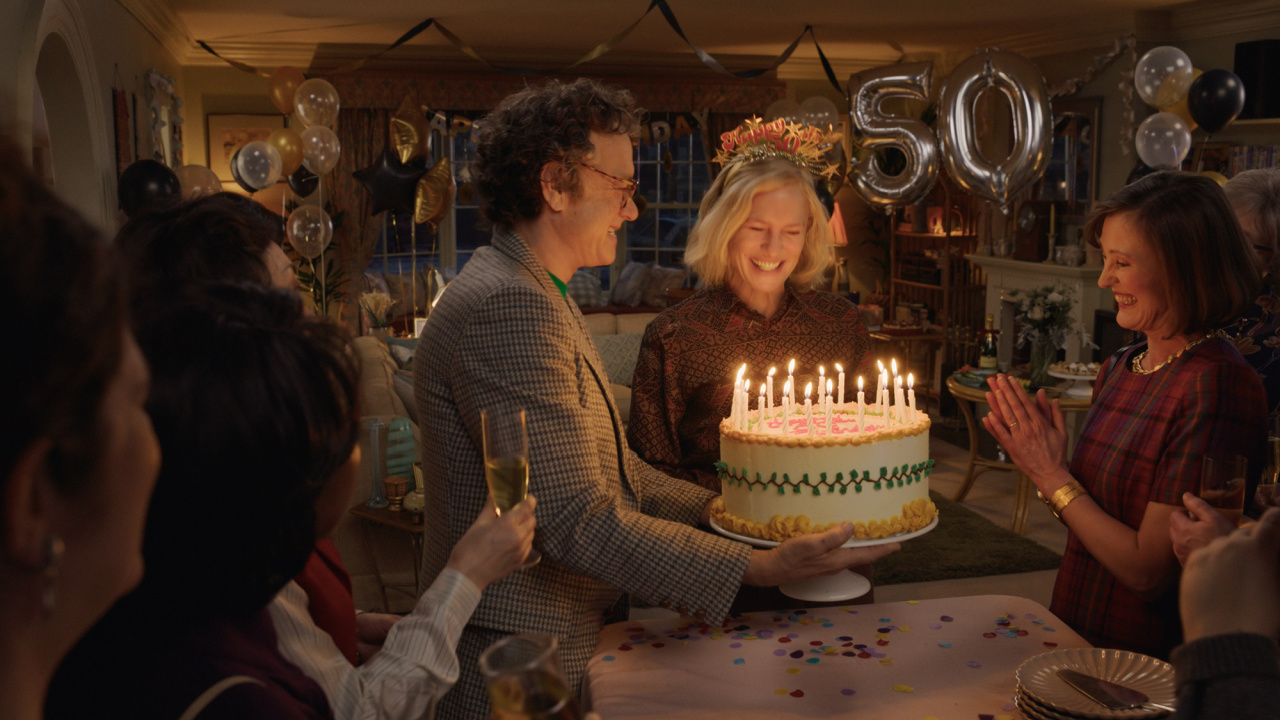
(L to R) Tom Hanks and Robin Wright star in ‘Here’. Photo: Sony Pictures.
Much has been made of the fact that the teaming of Zemeckis, Roth, Wright, and Hanks constitutes a reunion of the principal creatives of 1994’s ‘Forrest Gump,’ perhaps accentuating the director’s sentimentality over the passage of time. But trying to turn back time for his stars by de-aging them is not the best way to address this. While de-aging has come a long way – even in just the past few years – it’s still a weird, jarring sensation to see Tom Hanks and Robin Wright with smoother versions of their faces plastered on their heads, especially when their voices and physical movements are of the moment.
Wright probably fares best here, even given her stereotypical character and some of the grating dialogue that comes out of her mouth, while Tom Hanks continues his recent stretch of stilted performances and never relaxes into the role of the unmotivated Richard. Paul Bettany’s Al is supposed to be hard of hearing as a result of his WWII injuries, but the usually reliable Bettany ends up shouting most of his lines theatrically – as if projecting to the back row – whenever he speaks. The bottom line, however, is that it’s a shame to see capable actors like Bettany and Kelly Reilly do their best to animate these stock, post-war suburban disappointments.
Zemeckis doesn’t do them any favors either with his fixed gaze, which forces the actors to move closer to the camera when it’s time to deliver important bits of story or foreshadowing (speaking of which, the latter is incredibly heavy-handed: one character makes sure to let us know three times that they’ve forgotten something before – surprise! – they end up with Alzheimer’s). This all just heightens the artificiality of the whole setup – bringing the actors closer to the lens ironically adds more distance to what we’re watching.
Final Thoughts
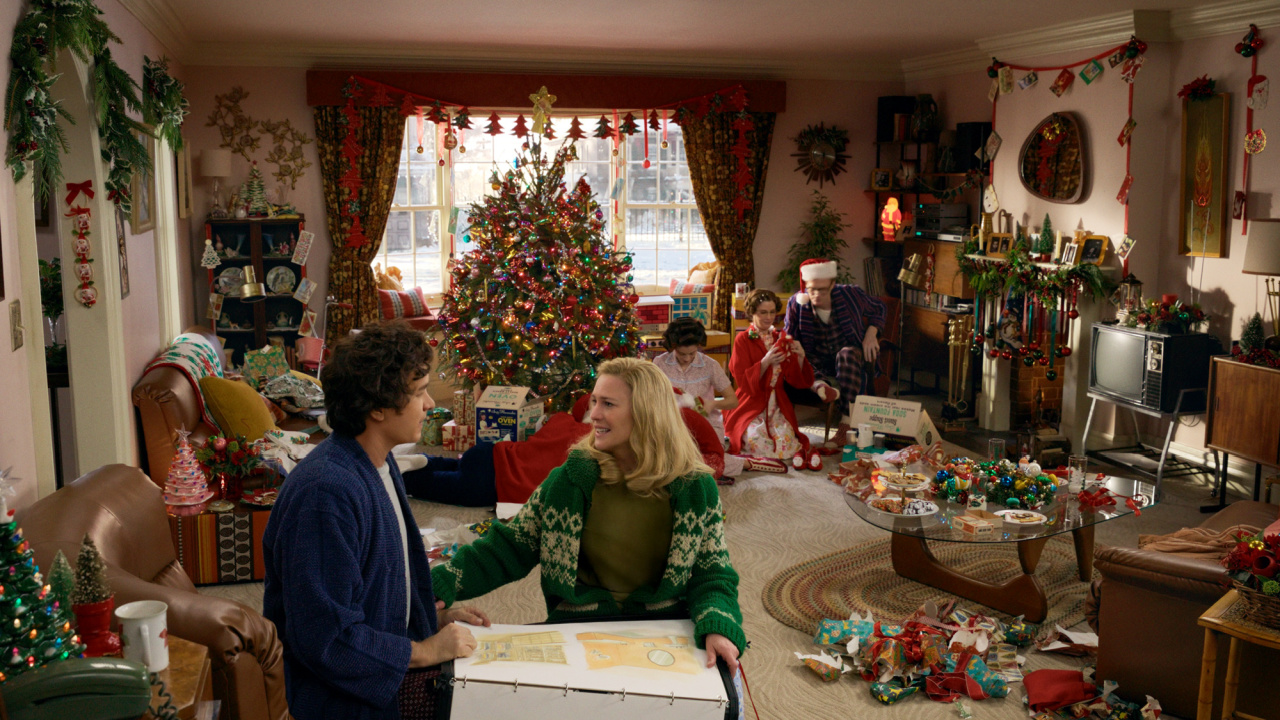
(L to R) Tom Hanks and Robin Wright star in ‘Here’. Photo: Sony Pictures.
We’ll always respect Robert Zemeckis for giving us some of our favorite films of all time – we stand by our assertion that ‘Contact’ is one of the finest sci-fi films of its time, while ‘Back to the Future’ is just about a perfect film (and the trilogy as a whole comes damn close to that hat-trick as well). And even when we don’t admire the films much – ‘Beowulf,’ ‘Death Becomes Her,’ or a truly dreadful outing like ‘Welcome to Marwen’ – we appreciate his curiosity about how far the medium can go and how it can continue to deliver sights that audiences have never seen.
But he’s paid a price for that quest along the way – sacrificing stories and characters with depth and nuanced emotional honesty for stunts that try fruitlessly to replace both — and ‘Here’ is the latest casualty of that journey.
‘Here’ receives 4 out of 10 stars.
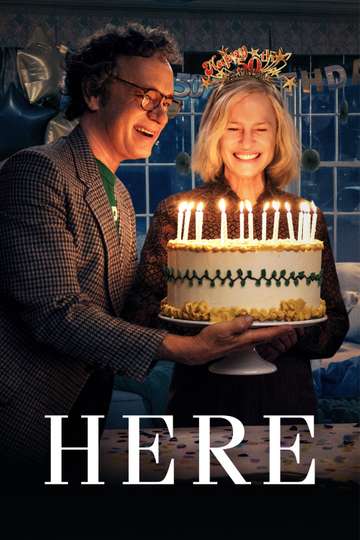
“Joy, hope, loss, love, life happens…”
An odyssey through time and memory, centered around a place in New England where—from wilderness, and then, later, from a home—love, loss, struggle, hope and… Read the Plot
What is the plot of ‘Here’?
A single area of land and the dwellings built on it is the scene for literally millennia of events, from the extinction of the dinosaurs to the COVID pandemic, with much of the focus on one mid-20th century family who live there for decades.
Who is in the cast of ‘Here’?
- Tom Hanks as Richard Young
- Robin Wright as Margaret Young
- Paul Bettany as Al Young
- Kelly Reilly as Rose Young
- Michelle Dockery as Mrs. Harter
- Gwilym Lee as John Harter
- Ophelia Lovibond as Stella Beekman
- David Fynn as Leo Beekman
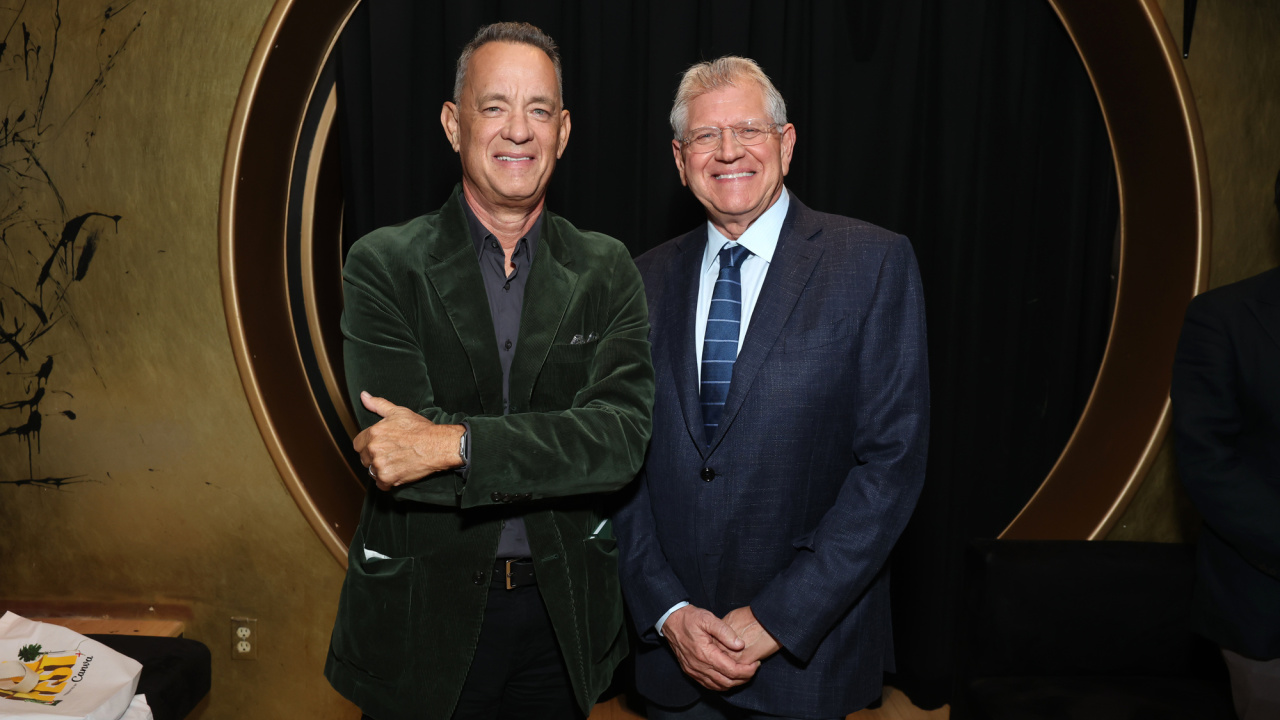
‘Here’ director Robert Zemeckis and Tom Hanks attend the AFI Fest Director’s Spotlight. Photo by Stewart Cook/Sony Pictures via Getty Images.















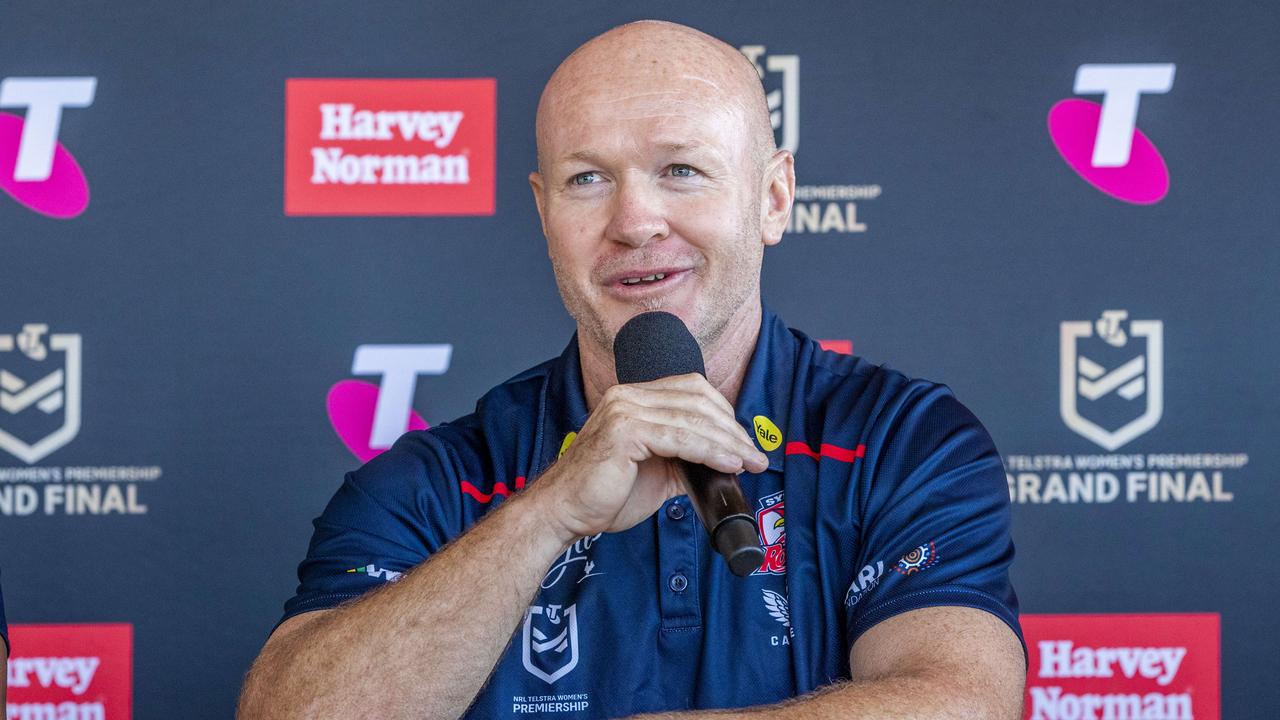




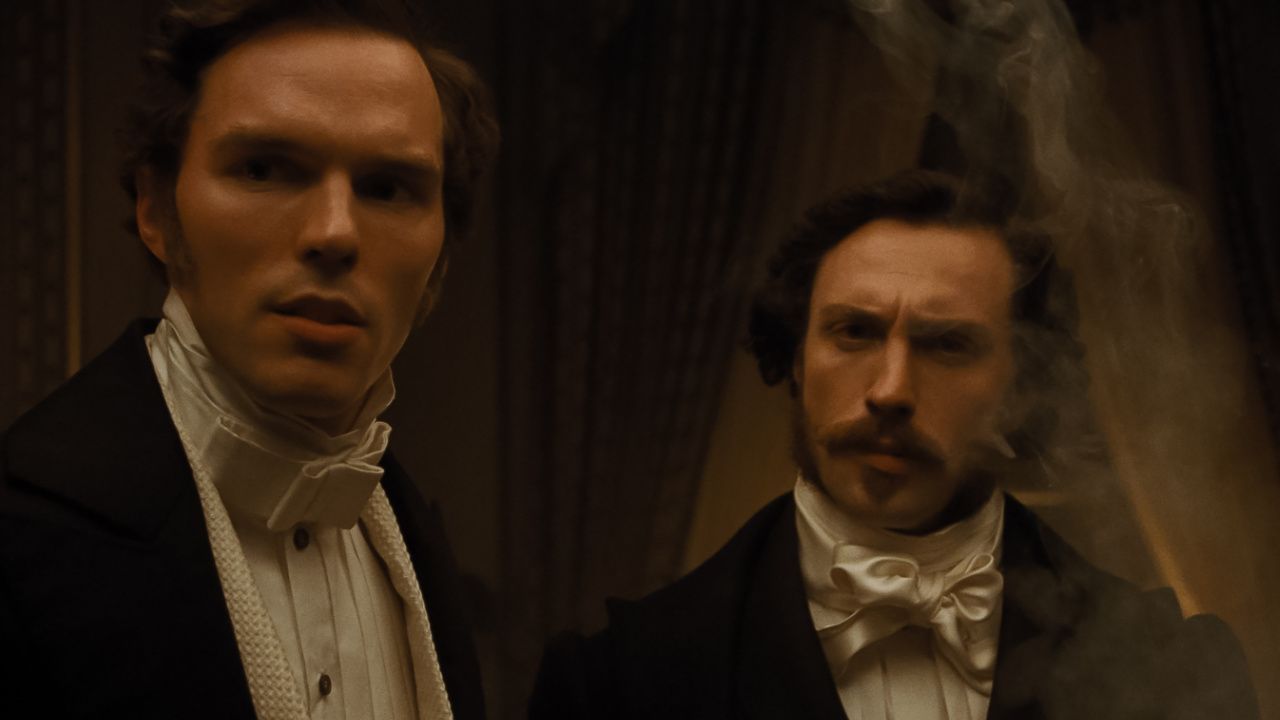

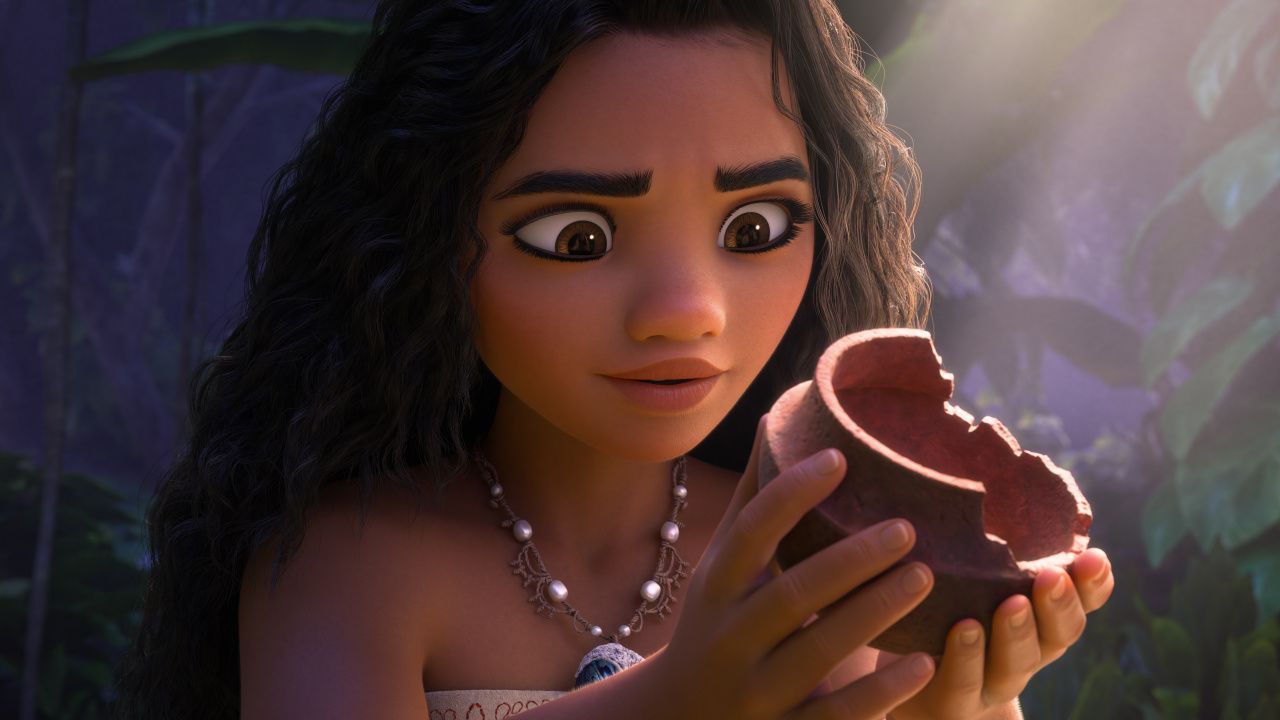
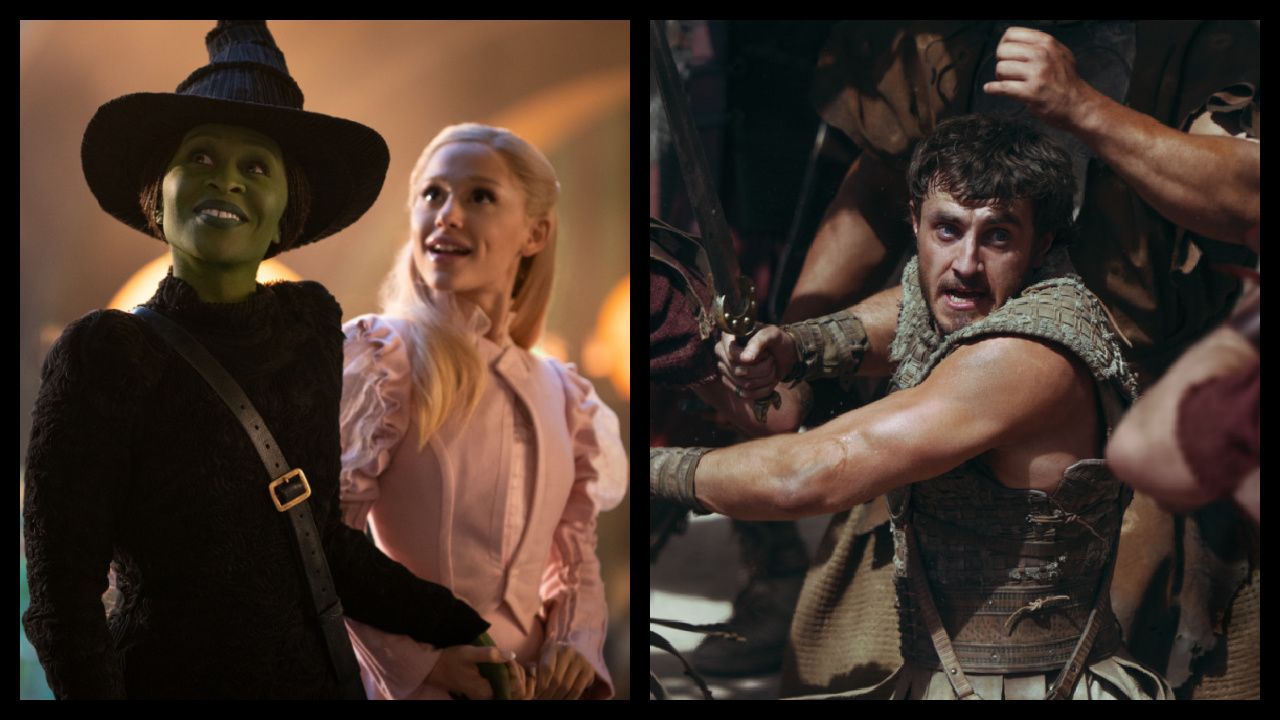
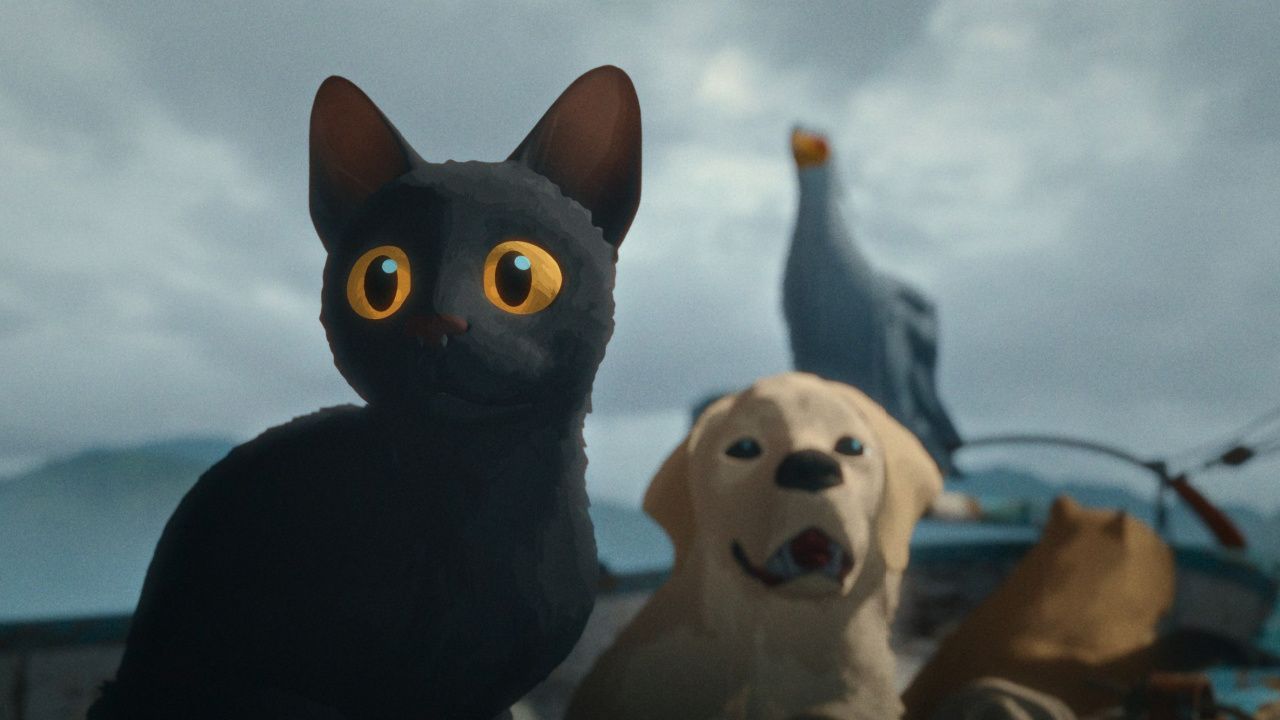

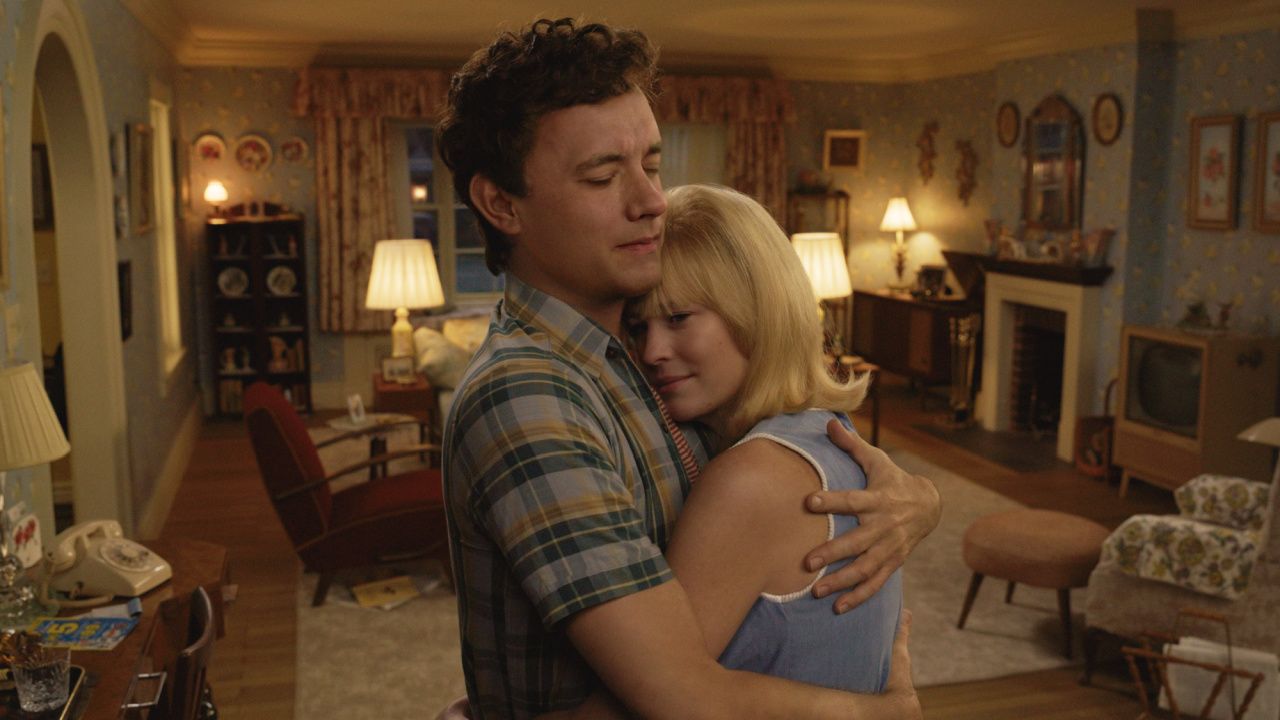

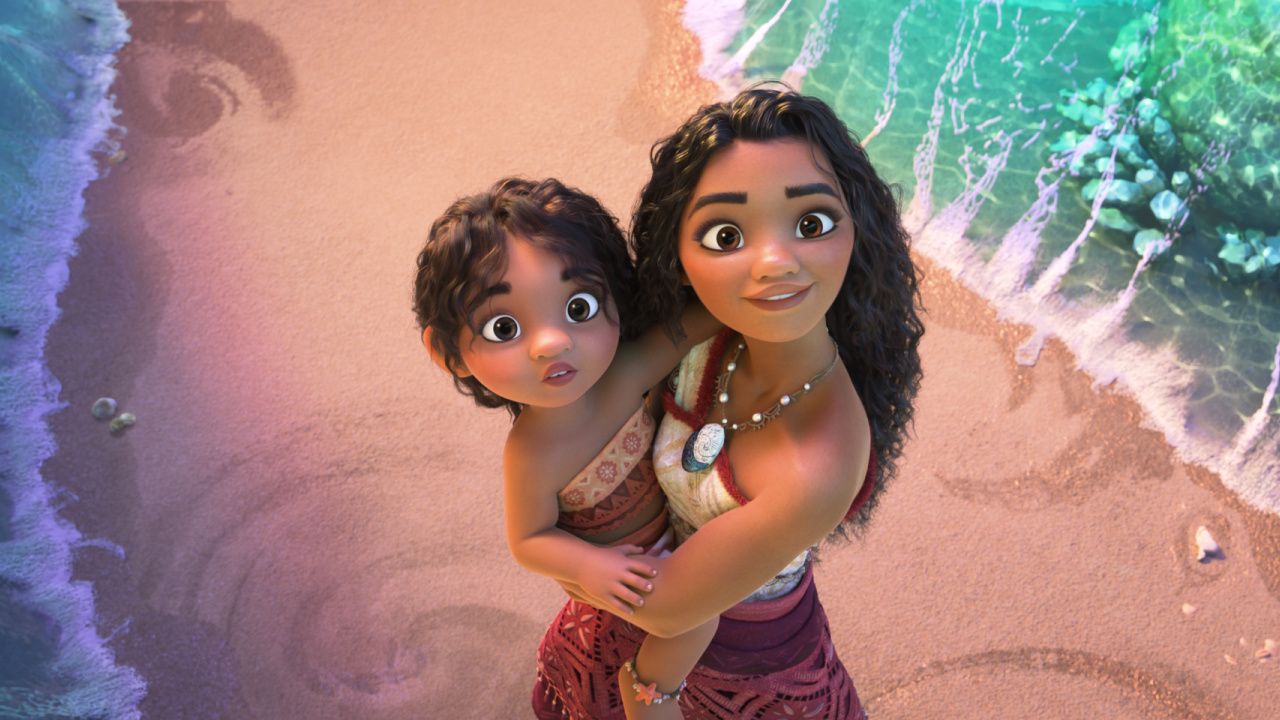
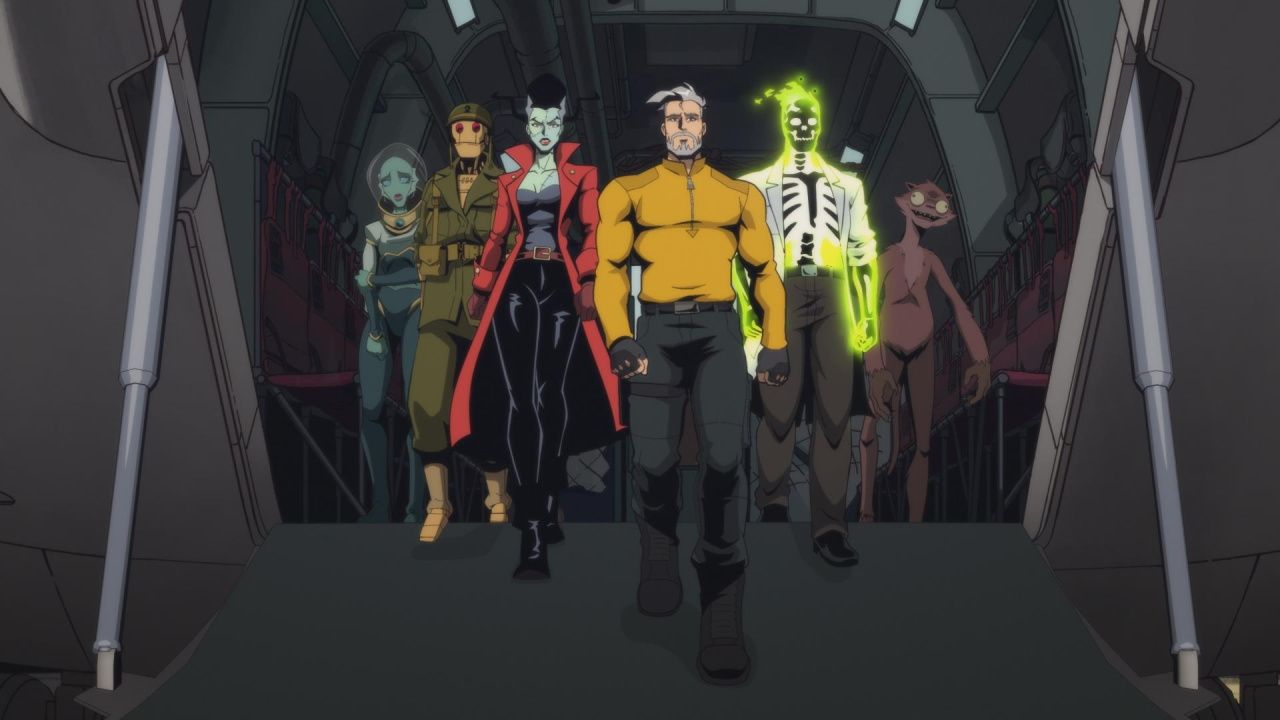
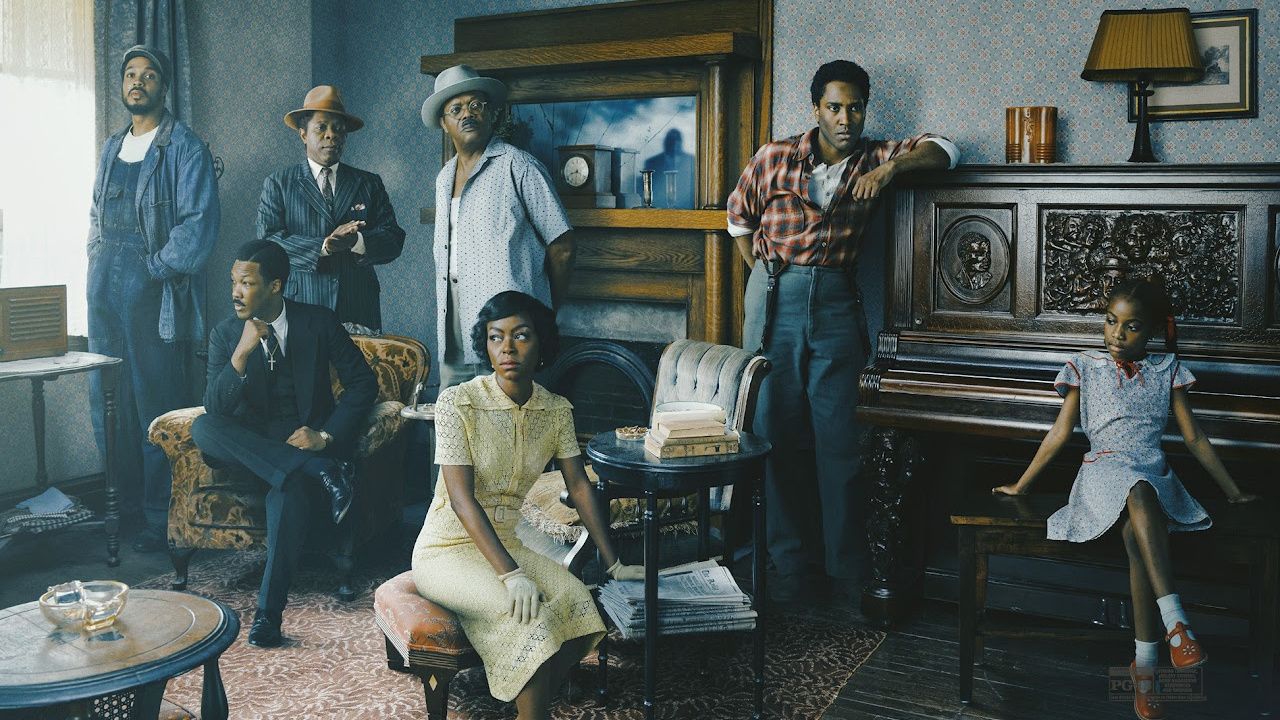
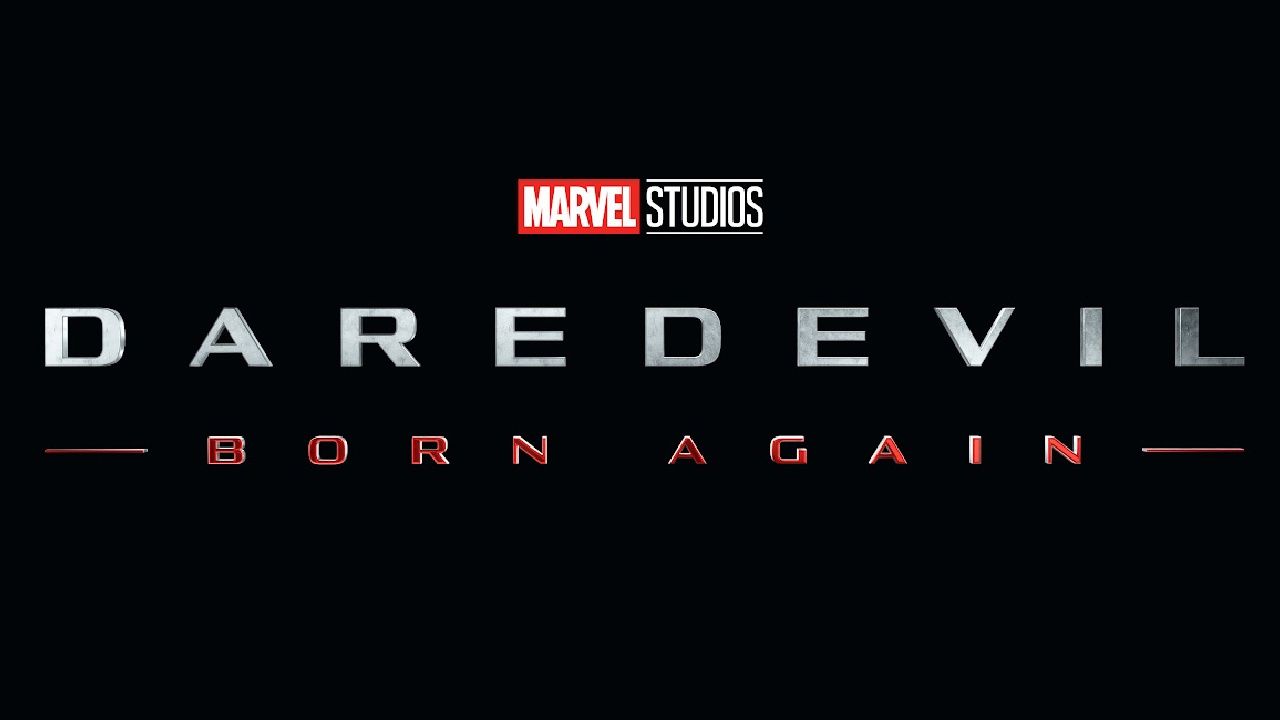





Discussion about this post